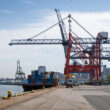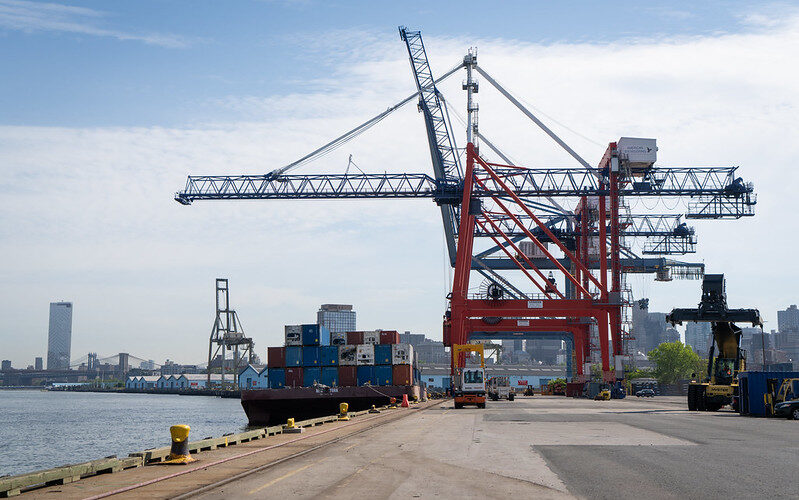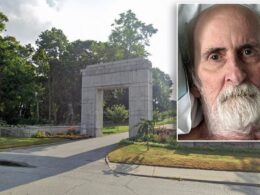If you’ve ever taken a ferry along the Brooklyn waterfront past the Red Hook piers, you may have wondered how such prime real estate could languish for decades. The 122-acre Brooklyn Marine Terminal (BMT) has been reduced to a deteriorating container port; a cruise terminal that sees visitors less than 100 days a year; a handful of industrial tenants; and the city Department of Transportation’s rock-crushing operation.
But new plans are taking shape that could lead us towards a brighter future, integrating maritime uses with community-based redevelopment, providing jobs and housing for a growing city.
Through an agreement reached last year, the ownership of BMT is being transferred from the Port Authority to the city Economic Development Corp., which has secured $164 million in federal funding and $95 million from the city and state.
As a result, this land presents a once-in-a-generation opportunity to address critical needs for local communities and the region, including the housing crisis that is gripping the city and region. It is vital that this process moves forward to take advantage of funding opportunities and stave off further deterioration of the site. But the site still needs a viable plan that mixes land uses to achieve multiple goals.
For several months, a 28-member Task Force has been meeting to develop a plan for the BMT. Deliberations have been passionate about location and scale of residential buildings and open space, flood protections, and how people and goods will move to and from the site.
Different constituencies have different priorities: supporting more port activities, adding housing, or increasing public amenities, all while planning for resilience. Each is a laudable goal, and the final plan needs to balance them to create a workable blueprint that makes economic sense.
This effort could deliver a modern, all-electric port with a complement of new housing and waterfront public parks. Port operations should be right-sized to serve the unique function that BMT would provide to the regional goods distribution network without monopolizing the entire site.
Even though port activity at BMT is only a fraction of the operations in New Jersey, BMT could play a key role in New York’s emerging “Blue Highway” system to move goods by barge instead of trucks, reducing traffic and improving air quality. And this can be done while opening the site for housing, parks and other uses, too.
Task Force members are being asked to vote on a plan in the coming weeks, recognizing that crucial details will still be worked out over the coming months and years.
As planners who have been engaged in this kind of long-range planning before, we know that the details will evolve over time and that a level of trust is required from stakeholders. To identify the right vision, leadership must be transparent about challenges, embrace creativity about opportunities, and meaningfully engage the community to move towards implementation.
While an important step, the initial vote is just the beginning of a longer process. After the Task Force votes in June, a working group will be formed to develop the General Project Plan (GPP), which will create another layer of refinement as the environmental analysis is conducted and then turned into a site plan, which is where block-by-block design happens. Once the final GPP is approved, yet another oversight board will be created to see the project through implementation.
If the Task Force can’t finalize and adopt a plan in the coming weeks, funds may disappear, putting the entire effort into jeopardy and leading to the continued deterioration and eventual closing of the port. Missing this chance would mean even more noxious uses separating the harbor from adjacent communities, continuing to burden them with environmental harm.
New York has invested in industrial enclaves for a generation now, with extraordinary returns in the Brooklyn Navy Yard and Brooklyn Army Terminal. Governors Island is becoming a global laboratory for how cities can mitigate and adapt to climate change.
The BMT can demonstrate how we create housing opportunities, reconnect and protect communities, support waterborne freight and reclaim the water’s edge. Brooklyn could have a living, working, resilient waterfront with good jobs, bright public spaces and housing for generations to come.
There are resources and political will to do something big here, including new housing and public amenities our communities need. But we must act now to finalize our vision. This is our best shot — so let’s take it.
Wright is president & CEO of Regional Plan Association, where Taylor is the vice president for transportation.








